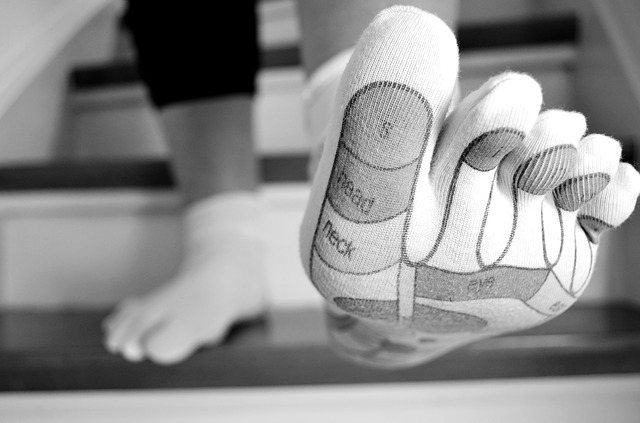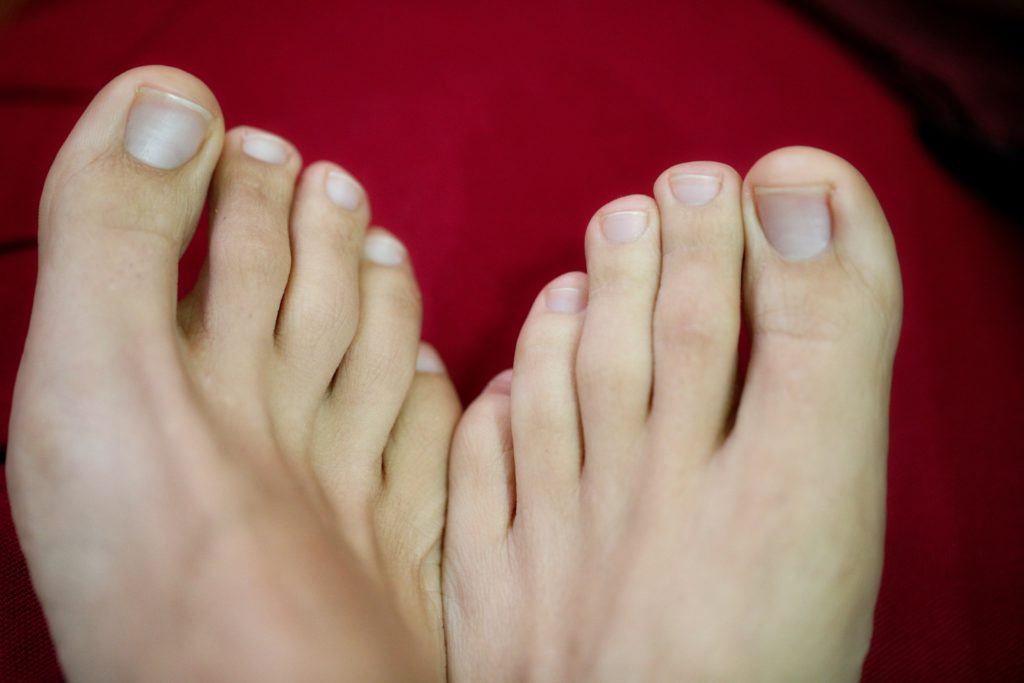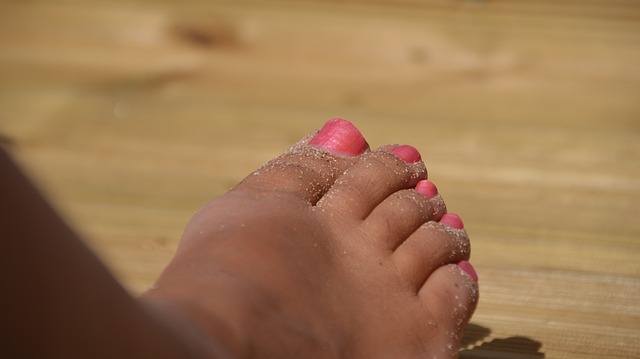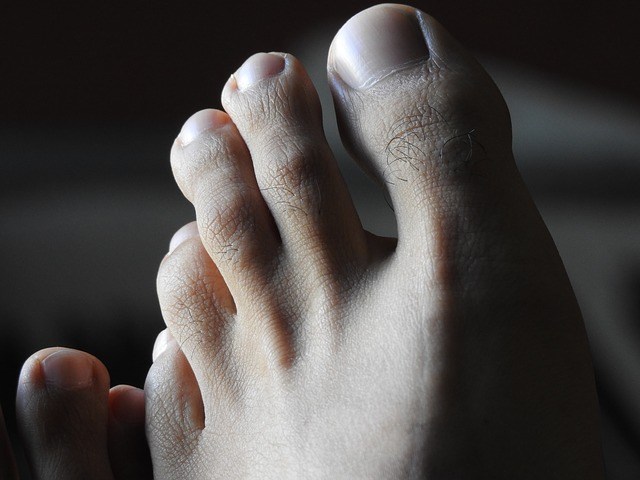Whether you love jogging, dancing, kickboxing, or just walking through the park, if you spend a great deal of time on your feet, you’re bound to feel some aches and pains now and then.
If these aches are beginning to escalate, however, it could be more serious than normal fatigue. You may have a common injury known as capsulitis – or, more specifically, capsulitis of the toe.

Capsulitis is unique in that it’s caused by repeated stress, rather than due to one instance of physical trauma. For this reason, capsulitis may be hard to notice, especially if we have learned to ignore the pain in our feet.
However, this condition shouldn’t be ignored. In fact, the longer that it remains untreated, the worse it becomes.
Indeed, learning about (and watching out for) capsulitis is key to ensuring the health of your feet.
Contents
What is Capsulitis?
Before we go any deeper into capsulitis of the toe, let’s first take a look at what capsulitis really is. Capsulitis, as the word may suggest, refers to the inflammation of a capsule.
But what exactly is a capsule in relation to our feet?
Capsule, Defined
Capsula is Latin for ‘little box.’ Medically speaking, the term capsule can be used to refer to a dosage of a drug; this may be the usage that you are most familiar with.
However, the term capsule can also be used to refer to a structure that envelops a part of a body. These parts may be an organ, or in this case, a joint.
Capsulitis, therefore, is the inflammation of this capsule. Because a capsule is usually made of connective tissue, it is prone to tearing and injury, especially when it is exposed to stress and trauma.
In the foot, the capsule is situated at the base of the toe; its main function is to support the joint and help it function properly.
The term capsulitis, therefore, can be used to define a large number of injuries. One of the most common forms of capsulitis is frozen shoulder.

Frozen shoulder, also known as adhesive capsulitis, is a condition that causes the shoulder to go stiff, making movement difficult and painful.
Another common type of capsulitis is capsulitis of the second toe, which we will be discussing in more detail.
Capsulitis of the Second Toe
Because of the sheer number of capsules that are present in our feet, and the amount of stress and pressure that our feet are subjected to every day, capsulitis of the second toe is a semi-common affliction.
Of course, other toes are also prone to inflammation due to stress and injury. However, the second toe is, quite literally, in a unique position.
Because of issues with the anatomy of the foot itself, combined with other factors such as our gait and posture, the second toe tends to absorb most of the stress that we put on our feet.
Often, when we walk, we use our big toe to propel ourselves forward; the momentum of this propulsion is then expanded to the toe right beside it, which is the second toe.
The fact that some of us also have longer second toes compared to our big toe complicates the issue.
Additionally, because of the stress that is put on our feet for propulsion, our third toe, as well as the ball of our feet, tend to be inflamed when we have capsulitis in the second toe.
This is aggravated further with time, since these three areas (the second toe, the third toe, and the ball of the feet) are the areas where we usually place excess pressure while standing at an awkward angle (such as when squatting, wearing heels, or balancing our weight after standing for long periods of time).
Capsulitis Causes
With that in mind, what brings about capsulitis of the second toe?
We’ve mentioned that capsulitis is a result of pressure being placed on our feet, which causes inflammation.
But since all of us have encountered a foot injury once or twice, and often we stand in awkward positions for exercise or work, why don’t we all encounter capsulitis of the second toe?

That’s because more elements are required to cause this injury. As such, here are some reasons why your foot may experience second toe pain and, eventually, capsulitis.
Stress
Unlike most causes of inflammation in the ligaments, capsulitis is often a result of the foot being subjected to pressure on a regular basis.
We’re not talking about a short run every few days, or a particularly long shift at work. This condition is seen in people who also carry heavy objects for a long period of time, or for dancers, who tend to bend their feet in ways unique to the rest of us.
Those who have their feet in positions that can stress the toes, such as in high heels and too-flat shoes, are also susceptible to the condition.
You won’t develop it after one injury to your feet – but after repeated trauma and strain that lasts consistently over a long time.
Anatomy
Capsulitis of the second toe can also be due to unusual anatomy.
The structure of your foot can contribute to the stress that is placed on certain areas, especially the capsules of the second and third toes.
As a result, a typical symptom that accompanies capsulitis of the second toe is middle toe pain.
Specifically, anatomical causes for second toe capsulitis include the following: arch instability, tight calf muscles, and possessing Morton’s toe (which refers to your second toe being longer than your big toe).
Gait
The way you carry yourself when you walk, jog, or run can also be a factor in developing capsulitis of the second toe.
This can be exacerbated by anatomy. Your gait may put excessive amounts of pressure on susceptible areas, which can lead to foot pain.
Thankfully, there are a number of exercises that can correct your gait, so that it doesn’t become a problem for your health.

Symptoms
Let’s be real, our feet just ache sometimes.
At moments such as these, rest and recuperation are the best tactics, allowing your muscles and joints to heal themselves naturally, either from general fatigue or something that could be more serious, but which is resolved with simple downtime.
However, the problem occurs when we cause too much injury to our feet, leaving them unable to keep up with their natural healing abilities.
Since early treatment provides the best results, it is wise to keep an eye out for the common tell-tale signs of capsulitis.
This includes:
- Pain in the ball of foot and second toe.
- Swelling.
- Pain when wearing shoes.
- Pain when barefoot.
These symptoms will last even after times of rest. While icing or heating the afflicted area may grant relief, it does not accomplish this for very long.
By noting the symptoms and seeking out medical attention soon, your doctor can resolve your discomfort and allow you to return to daily life pain-free.
However, the longer you wait, the more permanent it becomes.
Here’s a video explaining more on capsulitis.
When to See Your Doctor
As with most medical conditions, it is a good idea to seek professional help when one of two things occurs:
- When the pain begins to interfere with your daily activities.
- When the pain doesn’t go away, and worsens over time.
While soreness of the feet is a normal and common occurrence that happens to all of us, capsulitis is a serious condition, especially when left untreated.
This is why capsulitis is also sometimes referred to as ‘predislocation syndrome.’
While it can start out as pain that only affects one area of the foot, inflammation of one part will affect other ligaments, which can eventually lead to the dislocation of your toe. That will not only be painful but will be far more difficult to heal.
Diagnosis
If you suspect that you indeed have capsulitis, it’s wise to see a podiatrist specifically, so as to expedite your diagnosis and healing process.
Seeing your general practitioner may be helpful, but in the end, they are likely to refer you to a specialist.
The specialist will then conduct a number of procedures to confirm that your foot pain is capsulitis or any other type of foot injury.
This is due to the nature of capsulitis; it can be very easy to mistake for a different condition, which can lead to, at best, an ineffective treatment plan, or, at worst, severe complications.
When diagnosing your foot, your podiatrist will attempt to pinpoint the source of your pain. They will do a physical and visual examination of the area, pressing on sections of the foot and twisting it while asking if it elicits pain.

Your surgeon or doctor may also request an X-ray, as well as a gait analysis, to rule out other issues.
If your doctor confirms that you have capsulitis, it will then be time to explore treatment plans to reverse the damage and remove the pain you’re experiencing.
Treatment
There are two kinds of treatment plans available for this condition – surgical and non-surgical.
If the chance of surgery makes you skittish, don’t fret. Most sufferers of capsulitis can be treated back to full health with nothing more than a combination of non-invasive options.
Non-Surgical Treatment Options
Any good podiatrist or physician will always explore non-surgical treatment options first, among them being:
Rest and Other Home Treatments
Of course, rest will play a heavy role in all your treatment options, so be prepared to lessen your activity levels. This may include postponing workouts or requesting lighter tasks at work.
After this, your doctor will recommend placing ice over the inflamed area routinely, so as to decrease the irritation.
You may also be prescribed anti-inflammatory medication, either over the counter or as a prescription, to help reduce the swelling.
Restraints
If your case is severe, or you are unable to properly lessen your activities, your doctor may prescribe restraints to ensure your foot does not experience any unwanted strain. This can include taping or splinting the toe itself.
If your capsulitis has developed to the point of dislocating or nearly dislocating your toe, this will be especially crucial, as medication and rest will not suffice.
By forcing your toe to maintain its current shape, further damage can be prevented, not only by outside elements but also by the inflammation itself.

Orthotics
Orthotics refers to the use of artificial devices, such as foot and wrist braces, to help in treating medical conditions.
This may also include special lifts or molds that you place in your shoes, so as to lessen the pressure your feet and toes experience.
As such, your doctor may recommend them to provide relief to your existing condition, while also correcting unusual anatomy in your foot, preventing future issues.
Physical Therapy
Physical therapy may be needed to return your ligaments to their correct positions.
This treatment option may also be used to strengthen your muscles, lessening the amount of stress routinely placed on your foot.
If your case is particularly severe, your doctor may prescribe medication and restraint, then physical therapy near the tail-end of your recovery, easing your foot back into everyday usage.
This video shows how to tape your toe with capsulitis.
Surgical Treatment Options
For those with advanced conditions, surgery may be needed to restore your foot to complete health.
Of course, non-surgical treatment options will also be used in tandem with surgery to ensure that your foot recovers well.
Doctors will also make sure that all possible non-invasive treatment options have been tried and considered before electing surgical treatment.
Surgical treatments to alleviate capsulitis may include shortening or repositioning bones to remove scar tissues, as well as to remove stress on the joints.
Living with Healthy Feet
While capsulitis can be a massive issue for your health, the most important tactic is prevention. As long as you notice its onset before it worsens, there isn’t much to worry about.
As with every other health issue, the key is listening to your body and giving it the rest it deserves.
Do you have experience dealing with capsulitis?

